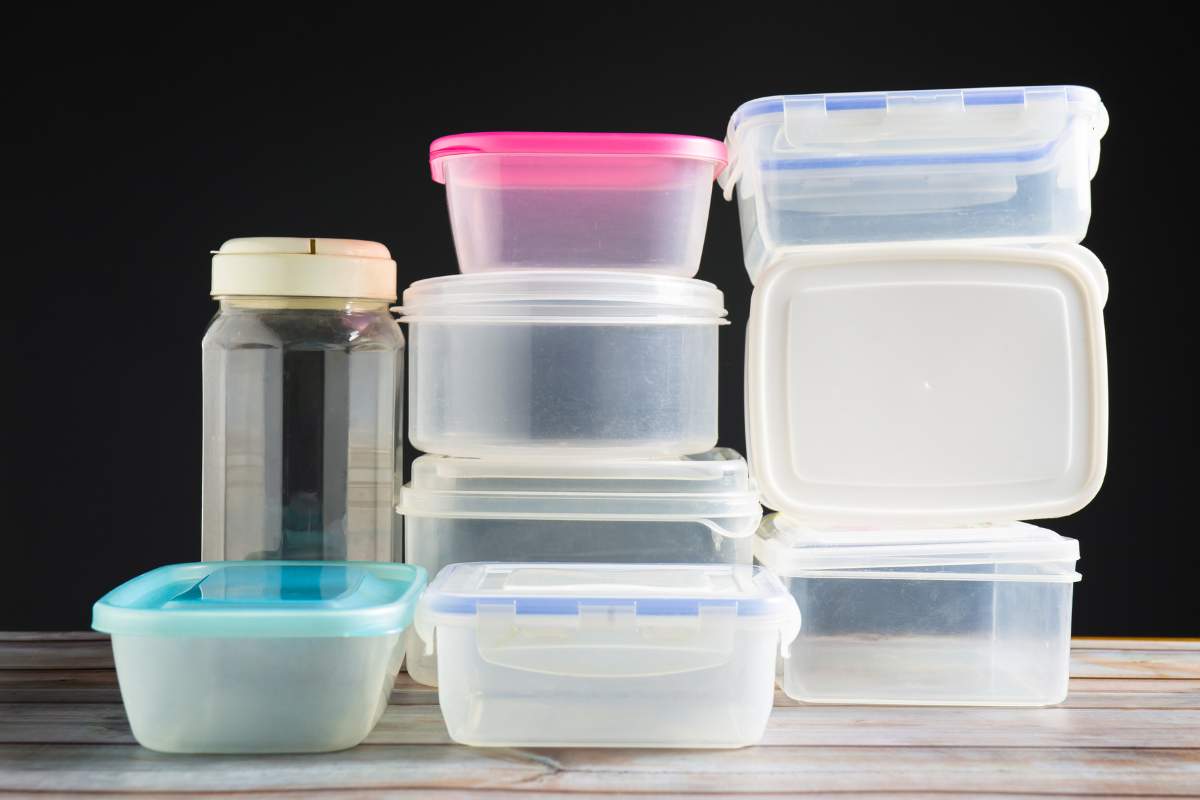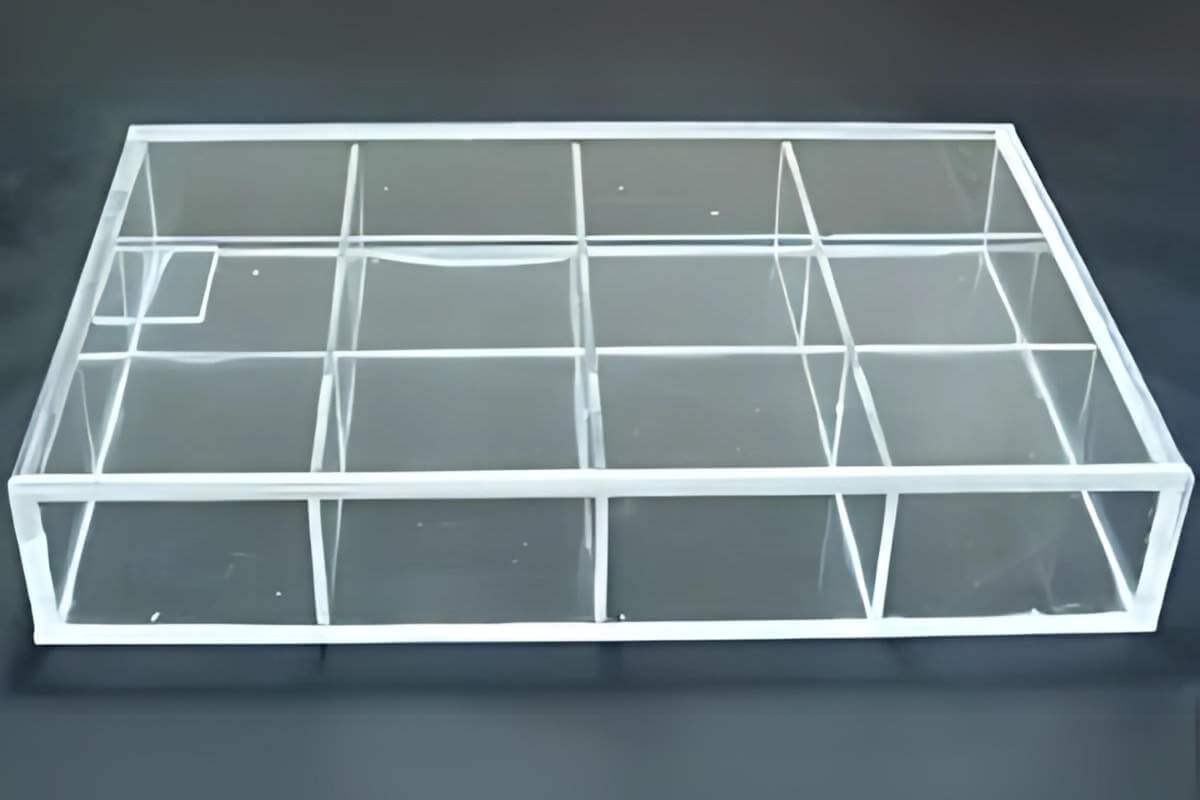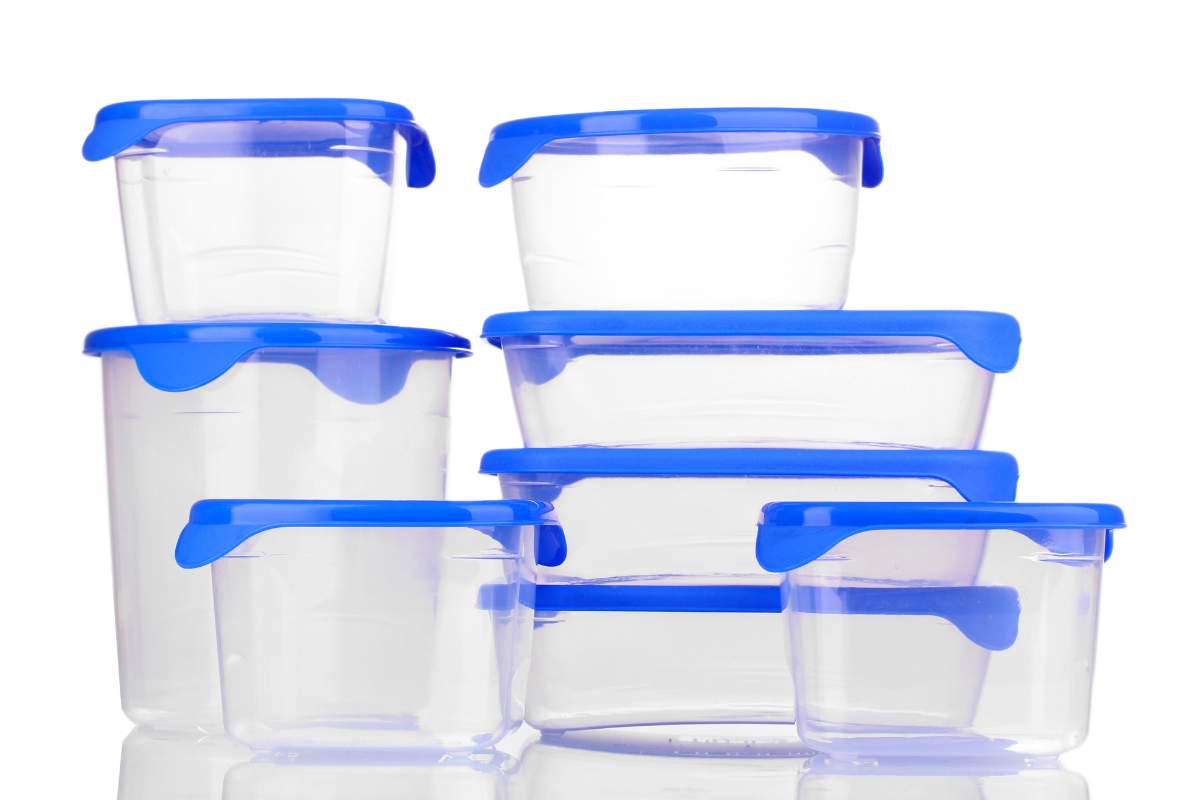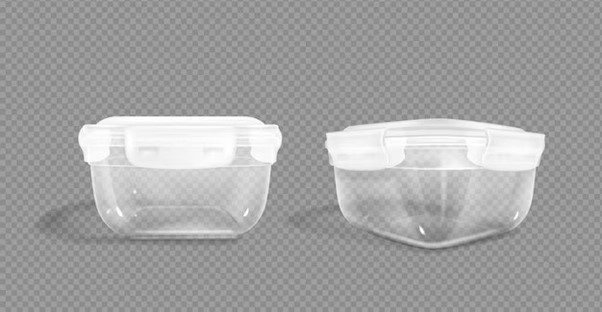Custom Plastic Containers
Custom Plastic containers are designed for individual uses in different industries and sectors. Using high-end polymers, these containers provide improved strength and resistance to chemicals. Custom designs provide specific sizes to fit the items well and also to aid in easy storage and transport. Some of these features include tamper-evident seals and stackability that will allow you to save space. Custom options can be chosen to meet the requirements of regulations and to be environmentally friendly.
Industries Uses Custom Plastic Containers
Various industries use custom plastic containers with lids as they all have different properties. In the food sector, they are approved by the Food and Drugs Administration hence a safe means of containing and transporting perishable foods. Benefits such as hermetic closures and UV protection serve both to enhance the product’s shelf life and to guard it against spoilage. go to food grade plastic material to know more about safeety of products.
In the pharmaceutical industry, custom containers help meet several regulatory requirements to protect the drugs from the environment. Such containers may have child-proof caps and desiccant chambers to ensure the efficacy of the product.
The automotive industry uses end-to-end custom containers plastic to meet its parts management needs. Many of these solutions have components that can be stacked and arranged in a way that would reduce the chance of damage while in transit.
Manufacturers of electronics use their containers that are also static-proof made from plastics. Foam inserts can be custom-designed to improve part retention so that sensitive parts are not harmed when delivered.
In e-commerce, custom containers improve the appearance of the brand and, at the same time, offer sturdy protection to various products. These solutions often involve adding elements that would show if somebody has tampered with the packaging and using sustainable material.

Designing Custom Plastic Packaging: Factors To Consider
Designing custom plastic packaging involves a thorough analysis of several technical characteristics:
- Material Properties: The choice of the proper polymer is of great importance. For instance, the properties of PET (Polyethylene Terephthalate) reveal higher barrier properties of moisture and oxygen than the food products. On the other hand, HDPE (High-Density Polyethylene) gives rigidity and shockproofing and is recommended for industrial use.
- Dimensional Specifications: One has to be very careful with dimensions to fit the packaging perfectly to the product. Applying CAD software can ease the process of the design and even enable creating tests on various conditions, including stacking and transport stresses.
- Barrier Functionality: It is crucial to evaluate the degree of required barrier properties. Flexible films can be developed to provide improved shielding from the factors of the external environment. For instance, the interconnecting of EVOH layers is essential in enhancing the reduction of oxygen permeability which is important in the extension of the shelf life of some sensitive products.
- Mechanical Features: Stress analysis conducted before the manufacturing process allows evaluation of the packaging’s ability to withstand deformation. Applying finite element analysis (FEA) can forecast the failure regions under load so that it is resilient enough during distribution.
- Sustainability Considerations: Specifically, bioplastics, or any work material and components containing recycled content, will help to reduce impacts on the environment. Assess the final disposal solutions for the packaging, that should correspond to the circular economy model, as well as be effective.
- Aesthetic Design and Branding: Digital or flexographic printing technologies are used to deliver high-quality graphics that give the brand better visibility. Think about the feeling and the look which may become some factors affecting the consumer’s decision process.
- Functional Design Elements: Add-ons such as child-proofing or handles as part of the cap design present major challenges at the engineering level. These elements must be made for usability tests and safety standards to follow the industry’s standards.
- Regulatory Standards: Carefully check compliance with the US FDA regulations for food contact materials, or ISO 9001/2000 regulations for medication packaging. This includes the testing for migration levels and the testing for labeling requirements.
- Cost Optimization: It is recommended to carry out a cost-benefit analysis at the design stage. This entails the assessment of material costs, manufacturing processes such as injection molding over blow molding, and probable savings on transportation resulting from optimizing the dimensions of the packaging.
- Manufacturing Feasibility: Consult the manufacturers as soon as possible in the design phase so that the packaging can be made effectively. Evaluate the tooling needed to be completed and the manufacturing schedule so that the project is not slowed down when it is being produced.
Available Sizes For Custom Plastic Containers
Most plastic containers can be made to fit different sizes that can suit different industry types. Here’s a detailed look at common sizes and their applications:
Small Containers (100-500 mL):
These tiny tubs are perfect for portioned products or as a way to allow customers to try your products. Cosmetics employ them for lotions or creams while food industries use them in packaging sauces or dressings. This makes them easy to handle and store, factors that consumers who want easy-to-handle and portioned products consider.
Medium Containers (500 mL – 2 L):
The middle-sized containers are ideal packaging for all kinds of products. It is normally applied to household articles including cleaning products or washing commodities for example shampoos. This size is optimal in terms of capacity and at the same time not too big to be managed for retail sales and at the same time large enough to accommodate bulk sales.
Large Containers (2 L – 10 L):
There is always a need for extended packaging, and large containers are often used to meet these requirements. They find their application in food industries for the storage of food products like oils or marinades, storage of industrial chemicals, and cleaning solutions. They are useful when it comes to an operation that needs large quantities for storage and ease of transportation.
Extra-Large Containers (10 L and above):
Extra-large containers are intended for the industrial segment because they are designed for intensive use. This type of container is vital in the manufacturing industries, transportation, and material handling industries. They are well-built to provide safety and enable the carriage of large volumes of either liquids or other materials.
Custom Shapes and Sizes:
Apart from the basic dimensions, value-added packaging allows for the creation of containers tailored to particular uses. This could be, for example, shapes that allow for the optimal positioning of one container on top of another or functional add-ons such as handles or spouts. There is efficient storage and transportation of the products since sizes are tailored to match the actual needs hence minimizing wastage and improving the experience of every user.

How Much Does Custom Plastic Containers Cost?
The cost of custom plastic containers depends on the type of material used, the size, and the quantity that will be produced in this case the cost will greatly differ. Here’s a more detailed breakdown:
Material Type
The cost is most affected by the type of polymer used. For instance, PET (Polyethylene Terephthalate) containers cost from $0.70 up to $3.00 per piece. It is popular for its high barrier properties and transparency, thus commonly used in food and beverage packaging. HDPE (High-Density Polyethylene) containers on the other hand, which range from $0.50 to $2.00 are usually used for household products because of their impact strength.
Container Size and Design
Pricing also depends on the size of the product. In the case of small containers (100-500 mL), the cost ranges from $0.50 to $3.00 per unit. These are best used where you are only going to use the container once, such as for holding sauce or cosmetics. Small containers (from 500 mL up to two liters) can cost from $2,00 to $5,00 ideal for shampoo or cleaning solutions. The cost rises with size, so large containers, 2L-10L, are $5.00-$15.00 because of the materials and manufacturing.
Production Volume
The results indicate that production volume is a determinant of the unit cost. Bulk purchases, in particular, can be made at a much cheaper price per unit. For example, if an organization placed an order for 10,000 units, the price per small container could be $1.00 while if an order is small, the price might be $2.50-$3.00 each. This is because, through economy of scale, the manufacturers can justify the setup and tooling costs against a larger number of units to be produced.
Customization Features
Custom features also directly increase costs; this includes unique colors and logos that may be printed on the equipment. For example, containers with special printing could cost an extra $1.00 to $3.00 per unit. Add-ons such as tamper-evident seals or particular caps also come at $0.10-$0.50 depending on their design and operation.
Tooling and Setup Fees
This is particularly so because initial tooling and mold costs may be high. The price for custom molds ranges from $5000 to $50000 depending on the design of the mold. Such costs are usually spread throughout the production cycle, and hence form part and parcel of the cost per unit, but are less sensitive to the size of the order.
Shipping and Handling
Finally, the cost of shipping has to be considered. While it may be cheaper to have the whole order shipped at once, per-item shipping can be cheaper with many items. Shipping was found to range from $0.20 to $1.00 per unit depending on the distance and the carrier chosen.
From these estimates, one can get a feel of the costs likely to be incurred in the production of custom plastic containers but as with most things, it is always a good idea to contact plastic container manufacturers for the most precise estimates, if you want to know more about cost about plastic products, you can go to injection molding cost post to know more detail, or send us your custom plastic containers that we will quote you a price.
Technical Aspects for Custom Plastic Containers
Select materials that exhibit particular mechanical characteristics like tensile strength, flexural modulus, and impact strength. Use PET, which is known for its high clarity and moisture barrier, and HDPE which has a high toughness and chemical resistance. The performance of the material under operating conditions must be defined by stress-strain analysis and thermal analysis (DSC).
Tolerances of Dimensions and Geometry Optimization
Set tight tolerance levels on the dimensions using CAD tools to achieve good manufacturing. Utilize such geometrical optimization procedures that would allow the production of the minimum weight feasible whilst still sustaining the strength of structures. It can help to analyze the wall thickness variation and draft angles of the product to help facilitate better mold design and therefore, lower production costs.
Finite Element Analysis (FEA)
Appeal to FEA to model planar mechanical response to different loads. This analysis is useful in determining failure modes and can be used to make changes in the design by increasing thickness or putting ribs and gussets where stresses are high. Apply results for the container’s design to maximize its shape for better load distribution and to reduce the container’s chances of deformation during handling and transportation.
Barrier Property Engineering
Create layers of shielding that help to protect against oxygen, moisture, and ultraviolet light. Include EVOH or sorbents within the barrier layers as the means to extend the shelf life for the product in question. Conduct the permeation test to evaluate the efficiency of the barrier layers and conformity with the products’ storage standards.
Thermal and Processing Characteristics
Do thermal analysis to determine if the material will be stable under processing conditions as identified by Tm and Tg. Studying the thermal conductivity of the selected materials and how it will affect the performance of the stored and transported produce concerning temperature changes.
Regulatory Compliance and Safety Standards
Regulatory compliance and safety standards are major challenges that business organizations encounter when handling their correspondents’ mail. Make sure that compliance with the design also includes country/region-specific codes applicable to the food processing industry, FDA compliance for food-related items, or ISO for the pharmaceutical industry. Perform migration test to determine the possibility of substances leaching out of the container. Keep very detailed records for the purpose of compliance along with quality reassurance.
Tools Designed Methodologies
Choose the right technological process of manufacturing (injection molding, blow molding, thermoforming, etc.) considering the level of detail and quantity of products. The gate area as well as the cooling channel design should be analyzed to minimize cycle time and reduce defects. Ensure that the design concept works in practice by partnering with the manufacturers who can provide critique and input on the project’s actual practicality of the design.

Techniques For Manufacturing Custom Plastic Containers
Custom plastic Container manufacturers employ certain techniques for fabricating plastic containers. Some common techniques include;
1. Injection Molding
Injection molding is an accurate process of manufacturing in which pellets of thermoplastic are made to melt and are then injected at high pressure into the mold cavity. In the mold design, it must be taken into consideration that the polymer used shrinks at certain rates. The cooling phase is essential since it freezes the plastic and demands the best cooling channel design to minimize the cycle time and promote equal cooling. This method is suitable for mass production of intricate shapes and produces near-net components with good dimensional tolerances and surface finishes.
2. Blow Molding
Blow molding is a process of making hollow plastic items through the process of blowing up a parison. It involves heating the thermoplastic material and then shaping it into a parison and finally, it is clamped on a mold. This is done through high-pressure air being introduced into the parison thus causing it to expand and push against the walls of the mold. Parameters of parison temperature, mold temperature, and air pressure have to be maintained at optimal levels to obtain identical wall thickness and to minimize such defects as sagging or improper blowout.
3. Thermoforming
Thermoforming is the action of heating a thermoplastic sheet to the point where it gains its flexibility and then draping it over a mold and applying vacuum or pressure to give it the required form. These concerns are heating temperature, heating time, and the mold design where features such as vents that allow air escape during formation can be fabricated. The cooling phase is important for holding the shape as well as the dimensional stability of the material. This method is most appropriate for fewer runs and simple geometries as compared with injection molding.
4. Rotational Molding
Rotational molding uses a powdered plastic that is put into a closed mold, the mold is heated and rotated along two perpendicular axes. When the mold is in rotation, the powder melts and forms a layer on the surface of the mold, thus making it a hollow part. The symmetry of the wall thickness is the foremost factor, which is dependent on the rotation rate and heating duration. This method is also suitable for large parts that are used for such applications as storage tanks where accuracy, material consumption, and the possibility of including inserts in the mold are critical.
5. Extrusion
Extrusion is the process whereby plastic pellets are heated and then put through a die to produce a continuous shape of sheeting, tubes, or profiles. The flow properties as well as the final dimensions of the article depend on the barrel temperature, screw speed, and die design. It also plays a vital role in ensuring shape integrity, normally by way of water baths and or air cooling. Extrusion is very cost-effective for high-volume production of regular cross sections and is often followed by secondary operations to provide finishing.
6. Amalgamated Manufacturing/ Additive Manufacturing/ 3D Printing
Additive manufacturing is a process of building up a part layer by layer from a digital model of the component to be produced using 3D Printing. It uses thermoplastics and photopolymers among others, and each layer is accurately either deposited or cured. These are the layer height, print speed, and infill density, these parameters determine the mechanical strength and surface quality of a final part. This kind of production is very useful in rapid prototyping and custom production where someone wants his product to be unique but lacks the high-speed production needed for bulk production.
7. Pressure Forming
Pressure forming is an improvement of the thermoforming process in that heat and positive pressure are used to form the plastic sheet. This technique affords higher detail and better draws compared to the common thermoforming in view of this it is appropriate for high fidelity. This means that the process parameters such as pressure, heating time, and cooling methods are critical in the process. There may also be additional features for air extraction and for controlling the flow of the material during forming.

Benefits and Limitations of Custom Plastic Containers:
Here’s a table outlining the benefits and limitations of custom plastic containers:
| Aspect | Benefits | Limitations |
| Customization | Tailored designs to meet specific needs. | Higher initial costs for custom molds and tooling. |
| Material Variety | Wide range of materials available (e.g., PET, HDPE). | Limited thermal resistance for some materials. |
| Lightweight | Reduces shipping costs and enhances portability. | May lack durability compared to heavier materials. |
| Cost-Effectiveness | Economies of scale for large production runs. | Smaller runs can lead to higher per-unit costs. |
| Barrier Properties | Excellent moisture and oxygen barrier options. | Not suitable for all chemical applications. |
| Design Flexibility | Complex shapes and features can be easily integrated. | Tooling for complex designs can be expensive. |
| Sustainability | Options for recyclable and biodegradable materials. | The environmental impact of plastic waste remains. |
| Production Speed | Fast production times for high-volume orders. | Slower for low-volume or one-off custom projects. |
| Aesthetic Appeal | High-quality surface finishes and branding options. | Some finishes may require additional processing. |
Types of Materials for Custom Plastic Containers
The are many types of plastic materials are used to make palstic containers, below are common materials are mostly used for csutom plastic contatiners manufacturing.
- Polyethylene Terephthalate (PET)
PET is a lightweight, clear plastic that is highly resistant to moisture and offers excellent durability. It’s commonly used for water bottles and food packaging because it preserves freshness and prevents contamination. Its recyclability makes it a popular eco-friendly choice. Go to PET injection mlding page to know more. - High-Density Polyethylene (HDPE)
HDPE is a strong, dense plastic known for its toughness and resistance to chemicals and impacts. It’s used for containers like milk jugs and detergent bottles. HDPE is less prone to cracking and is widely recycled, contributing to its popularity for packaging. If you want to know more about HDPE material you can go to HDPE injection molding page. - Polypropylene (PP)
PP is a versatile plastic with a high melting point, making it ideal for items like food containers that need to withstand microwave heating. It is also durable, lightweight, and resists chemicals, making it suitable for various household and industrial products. Go to polypropylene injection molding page to know more. - Polyvinyl Chloride (PVC)
PVC is a durable plastic that can be either flexible or rigid. It’s often used in food wrap, medical containers, and plumbing pipes. While highly versatile and cost-effective, PVC requires special recycling processes due to its chemical composition. Go to PVC injection pipe fitting mold page to know more. - Low-Density Polyethylene (LDPE)
LDPE is softer and more flexible than HDPE, making it ideal for squeeze bottles, grocery bags, and cling wrap. It offers good resistance to moisture but isn’t as strong as HDPE. Its flexibility and transparency make it useful for various packaging applications. Go to PE injection molding to know more. - Acrylonitrile Butadiene Styrene (ABS)
ABS is a tough, impact-resistant plastic often used in products like electronics housings and automotive parts. It’s known for its rigidity and ability to withstand high-stress environments. Its glossy finish and strength make it ideal for durable consumer goods. Go to ABS injection molding page to know more. - Polystyrene (PS)
Polystyrene can be either rigid or foamed. It’s commonly used in disposable cups, food containers, and insulation materials. While affordable and versatile, it’s less eco-friendly because it’s harder to recycle and often used in single-use products. Go to PS injection molding pgae to know more. - Ethylene Vinyl Alcohol (EVOH)
EVOH is a plastic with excellent barrier properties, particularly against gases like oxygen, making it perfect for food packaging that needs to preserve freshness. While not used on its own for structural purposes, it’s often combined with other plastics to improve their performance. - Polycarbonate (PC)
Polycarbonate is known for its transparency and toughness. It’s often used in products like reusable water bottles, eyewear lenses, and protective panels. PC is valued for its strength, but care must be taken as it may contain BPA, a chemical of concern in some applications. Go to polycarbonate injection molding page to know more. - Bioplastics (PLA, PHA)
Bioplastics such as Polylactic Acid (PLA) and Polyhydroxyalkanoates (PHA) are derived from renewable resources like corn starch or sugarcane. PLA is commonly used for compostable food packaging, while PHA is more durable and used in medical and agricultural applications. Both are praised for their reduced environmental impact compared to traditional plastics.

Final Summary
In conclusion, the application of creating custom plastic containers demands the selection of the right material and manufacturing processes appropriate to the use of the containers. These include mechanical properties, chemical compatibility, and rate of fabrication. Injection molding, blow molding, and 3D printing are some of the more sophisticated manufacturing techniques that each has its strengths which need to be balanced against cost, volume, and complexity of design. By applying these findings, the manufacturers can enhance the utilitarian and ecological features of plastic containers along with meeting sectoral regulations.
FAQs
Q1. What factors influence material selection for plastic containers?
Factors that determine material choice include; chemical resistance, mechanical properties, thermal properties, and statutory requirements. Such characteristics guarantee the containers meet the precise requirements of the applications they are used for, not to mention safety.
Q2. How does the manufacturing method affect costs?
The decision of how to make a product affects costs by factors such as tooling costs, the number of parts produced, and the time taken to produce each part. For example, technologies such as injection molding where a large number of items are produced at once, minimize costs where many items are being produced at once.
Q3. What are the benefits of using bioplastics?
One, bioplastics are manufactured from renewable resources, and the majority of them are biodegradable. It can enhance a brand’s sustainability position and parents looking for a suitable brand of products that use socially conscious packaging materials.
Q4. How do plastic container manufacturers ensure safety compliance?
The plastic container manufacturers can guarantee safety by carrying out tests of migration and leaching while also obeying the safety measures of the various industries. Recording and tracking of such materials utilized in the production process is critical to validation and conformity to safety requirements.



Leave a Reply
Want to join the discussion?Feel free to contribute!